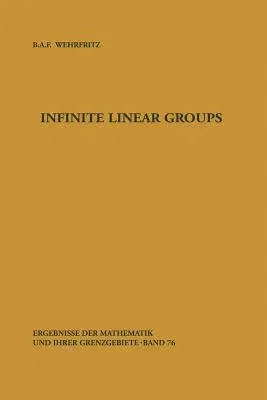Bertram Wehrfritz
(Author)Infinite Linear Groups: An Account of the Group-Theoretic Properties of Infinite Groups of Matrices (Softcover Reprint of the Original 1st 1973)Paperback - Softcover Reprint of the Original 1st 1973, 3 October 2013

Qty
1
Turbo
Ships in 2 - 3 days
In Stock
Free Delivery
Cash on Delivery
15 Days
Free Returns
Secure Checkout
Part of Series
Ergebnisse Der Mathematik Und Ihrer Grenzgebiete. 2. Folge
Print Length
232 pages
Language
English
Publisher
Springer
Date Published
3 Oct 2013
ISBN-10
364287083X
ISBN-13
9783642870835
Description
Product Details
Author:
Book Edition:
Softcover Reprint of the Original 1st 1973
Book Format:
Paperback
Country of Origin:
NL
Date Published:
3 October 2013
Dimensions:
23.39 x
15.6 x
1.32 cm
ISBN-10:
364287083X
ISBN-13:
9783642870835
Language:
English
Location:
Berlin, Heidelberg
Pages:
232
Publisher:
Weight:
353.8 gm

